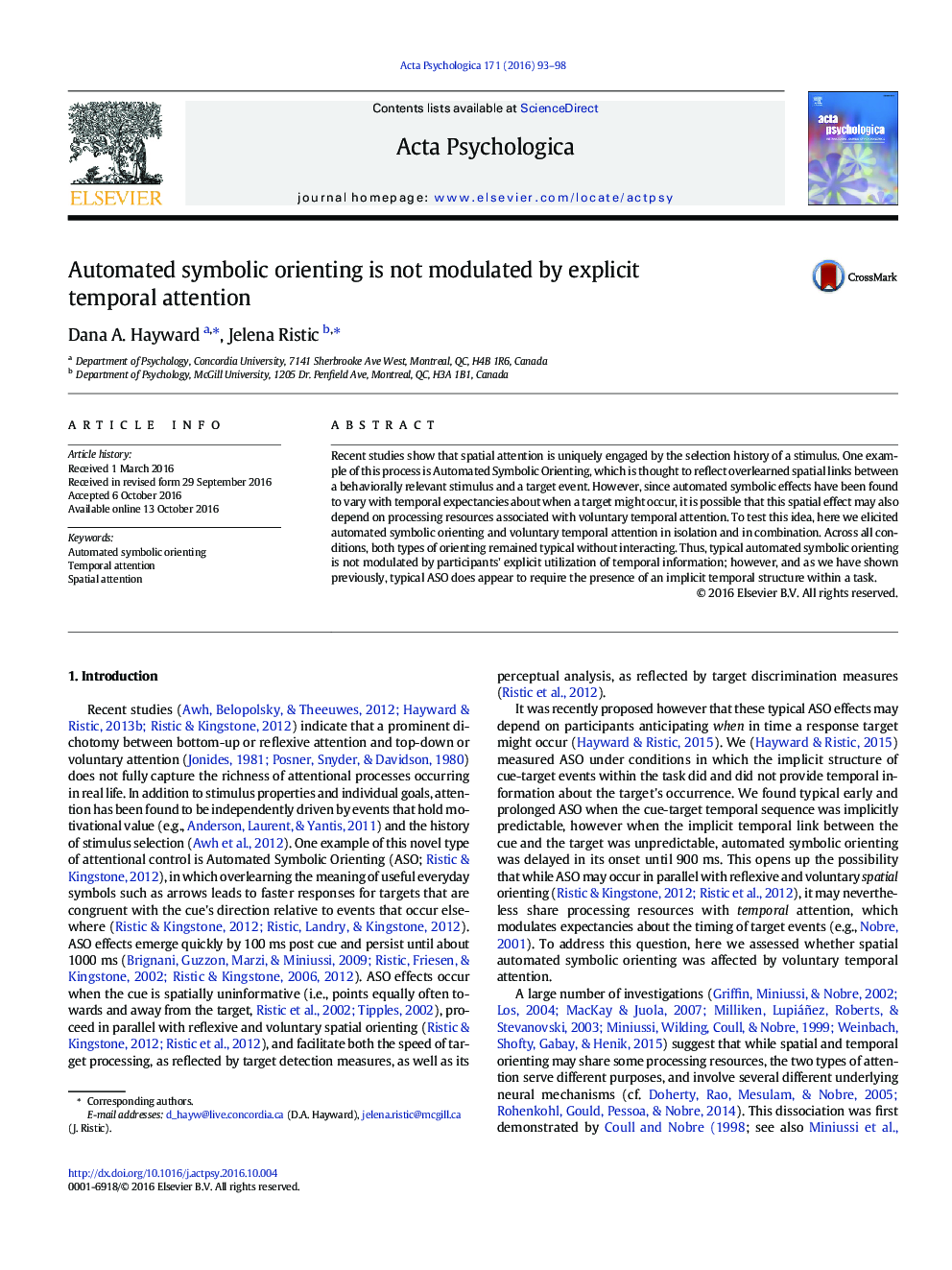| Article ID | Journal | Published Year | Pages | File Type |
|---|---|---|---|---|
| 5040284 | Acta Psychologica | 2016 | 6 Pages |
â¢Does spatial automated symbolic orienting depend on voluntary temporal attention?â¢We elicited automated symbolic orienting and voluntary temporal attention togetherâ¢Even when activated in combination, both types of orienting did not interfere
Recent studies show that spatial attention is uniquely engaged by the selection history of a stimulus. One example of this process is Automated Symbolic Orienting, which is thought to reflect overlearned spatial links between a behaviorally relevant stimulus and a target event. However, since automated symbolic effects have been found to vary with temporal expectancies about when a target might occur, it is possible that this spatial effect may also depend on processing resources associated with voluntary temporal attention. To test this idea, here we elicited automated symbolic orienting and voluntary temporal attention in isolation and in combination. Across all conditions, both types of orienting remained typical without interacting. Thus, typical automated symbolic orienting is not modulated by participants' explicit utilization of temporal information; however, and as we have shown previously, typical ASO does appear to require the presence of an implicit temporal structure within a task.
